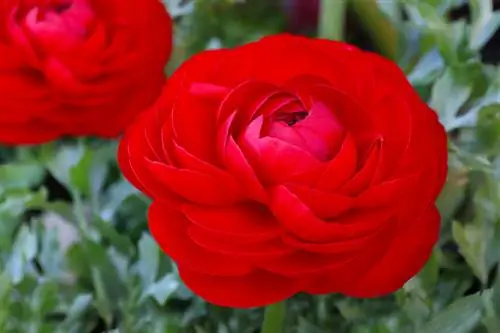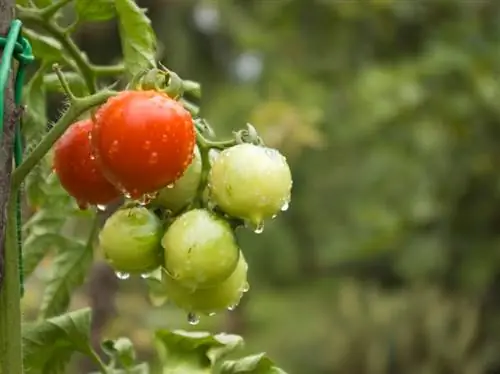- Author admin [email protected].
- Public 2023-12-16 16:46.
- Last modified 2025-01-23 11:20.
It's autumn. Not only the season for most fruit plants, but also the season for ranunculus is now over. In order to enjoy the ranunculus again next year, you should know about their winter hardiness!

Are ranunculus hardy?
Ranunculus are generally not hardy and can only tolerate temperatures slightly below 0°C. In mild regions they can overwinter outside if they are sufficiently protected. Otherwise, the tubers should be dug up and stored frost-free.
Most varieties are not frost-proof
Even if some dealers complain: ranunculus are not sufficiently frost hardy in this country. Most varieties cannot tolerate frost or only tolerate a few degrees below 0. A few specimens are still frost hardy down to around -10 °C. However, the tolerance of these minimum temperatures should not be put to the test. The tubers quickly froze and the plants died
Winter outside in mild regions
Do you live in a region with a mild climate such as Rhineland-Palatinate, Saarland or the Lake Constance region? Or do you trust farmers' rules and the coming winter is guaranteed to be mild? Then you can overwinter the ranunculus outside.
So that the tubers, which are approximately 5 cm deep, are somewhat protected in winter, it is recommended to cover them with a warm layer. Brushwood, compost or fleece are well suited for this. Place the material generously over the tuber area.
Endangered specimens that require protection
Not all ranunculus need to be overwintered. Above all, young plants, freshly sown ranunculus, ranunculus that are in rough locations and those specimens that are in pots, boxes or buckets outside on the balcony or terrace should be overwintered.
Dig up the bulbs and overwinter them
In addition to the option of covering the tubers outside, you can overwinter them indoors. This is how it works:
- in late autumn
- Get the tuber out of the ground
- remove soil and dried plant parts
- 1 to 2 days to dry
- overwinter in a frost-free place
The wintering quarters should not only be frost-free. It is also important that it is cool (6 to 8 °C is optimal), dark, dry and airy. Cellars are well suited. For example, place the tubers in a wooden box, a pot with soil or wrap them in paper and place them in a bowl.
The right timing
When the leaves and flowers have fallen off, it is the right time to dig up the tubers for overwintering. This is usually the case around mid/end of October.
Overwintering ends in spring around March. The onions are placed in cold water for about 5 hours. They are then placed 5 cm deep in soil. From the end of April the plants can be planted outdoors again.
Tip
If you decide to dig up the tubers for overwintering, take advantage of the opportunity to propagate them! Remove the sprouting bulbs that have formed on the root tuber! You can plant them in spring.






